PASSENGER TRANSPORTATION
Wichita has a substantial range of normal, urban passenger travel options, though all are fairly limited and expensive:
 Taxi
Taxi
Wichita is unreliably served by three taxi lines:
- Best Cab (phone 838-2233)
- American Cab (phone 247-3886)
- ABC Taxi (merged with American Cab)
(phone 262-7511)
Although unified dispatch of the latter two services has improved their availability and efficiency somewhat, both services provide unpredictable service -- routinely requiring wait times of at least 15-30 minutes, and all-too-often with delays of more than an hour. Bad weather creates demand loads greater than the cabs can cope with, and delays of up to TWO hours are not unheard of.
UPDATE: Early 2021
None of Wichita's taxi services maintain reliable 24-hour-a-day / 7-day-a-week service (owing, reportedly, to a shortage of drivers, possibly driven by competition from
Uber and Lyft services), and sometimes refuses to even book a taxi when called -- saying "call back in a half hour" or "call back in an hour" to see if a cab is available.
ABC's dispatcher now demands not only your address, and destination address, but both your first name and last name, and a call-back number, and will promptly hang up on you if you do not provide all the requred information.
Arrival-time promises by taxi dispatchers are completely unreliable
(a promise of 15-30 minutes is common, but often turns into an hour or more in reality), unless you have scheduled the ride a day or more in advance (even then, it can be iffy, especially in bad weather).
Taxi service at the municipal airport is, however, fairly reliable:
the high standard taxi fares for airport passengers attract many cab drivers, who line up in front of the airport terminal, waiting for passengers. When a taxi is not immediately present at the airport, a call to the taxi service will usually produce one quickly.
(NOTE: Some very limited taxi service -- between the airport and a hotel, chiefly -- is available from "courtesy vans" operated by some major local hotels and motels. Courtesy vans may also provide other limited local transportation for hotel patrons. Hours and accommodations vary; contact the hotel directly.)
However, for those people most in need of taxi service -- poor, inner-city, disabled and elderly passengers -- service can be far less readily available or accommodating.
Except at the airport, it is not possible to hail (flag down) a cab in Wichita. They will not stop. They will only respond to a phone call made to the taxi service's dispatcher.
Wichita's taxis are a very expensive form of travel
-- even compared to the fares of East-Coast big-city taxis.
Fares range around two dollars a mile, with a two-dollar base charge (additional passengers cost an extra dollar).
Taxi vehicles range from small sedans to large, 6-7 passenger vans, and specific-size vehicles can be requested, though this may result in further delay.
Taxis can be pre-scheduled, hours or days in advance,
to substantially increase the likelihood of prompt pick-up at a customer-specified time.
Package pick-up and delivery.
By prior arrangement, local taxi services will pick-up and/or deliver packages -- a costly form of delivery, but useful in extraordinary situations.
Troubled-Car Services
Wichita taxis can also provide, on an unreliable basis:
- Jump-starts to stalled vehicles (at a steep price), or (in some cases)
- Car-opening aid to drivers locked out of their cars, or
- Gasoline delivery to cars out-of-gas (an expensive and complicated process: The cab arrives at the stalled car, picks up the stranded driver who must have their own gas can, or takes the stranded driver to a store to purchase or borrow a gas can, then to a gas station to get the gas, then back to the car; drivers will not deliver gasoline, themselves).
Taxi drivers
Taxi drivers vary widely in competence, responsibility, courtesy, personality and safety. However, each is licensed by the City of Wichita, following a background check by the Wichita Police Department. Taxi company insurance providers add additional requirements, affecting the quality of drivers allowed to operate cabs.
Taxi Alternatives (Uber, Lyft, etc.)
In Wichita, as around the nation, and the world, ride-sharing services have appeared, which allow riders to summon a ride via an internet-based dispatch service. They require the rider to have an internet Web-connected device, from which they can access the company's online dispatch service.
Most famously Uber and Lyft, are internet-accessed through an
"app" program downloaded by the rider into their "smartphone." An account must be set up in advance, by providing information about your bank account or credit card. Cash is not accepted.
The ride-share companies require that their drivers have a GPS navigation-and-location reporting device turned-on at all times, indicating the driver's location to the dispatcher, for routing and scheduling, and for the passengers' security.
Drivers are screened by a background check by the company. Rider complaints, filed online, can result in refunds. Drivers usually use their own vehicles, though drivers can also rent suitable cars from Uber.
Car-Pooling
The original form of "ride-sharing" is car-pooling, where two or more people agree to share a ride in a single car belonging to one or the other of them -- often to the same (or nearby) destinations, or from approximately the same origin. Though popular in larger urban areas, car-pooling is largely a thing of the past in Wichita.
In car-pooling, one or more drivers make their car, and themselves as drivers, available to transport others to and from destinations, often on a cost-sharing basis (paying for gas). In some arrangements, the responsibility for providing car, and doing the driving, rotates periodically among a consistent group of riders ("car-pool").
As cars have gotten smaller and more plentiful, and gasoline much cheaper (in inflation-adjusted dollars), the concept has become far less popular.
During the Energy Crisis of the 1970s (which drove gasoline prices to astronomical highs, and created gasoline shortages), Wichita -- under a liberal city commission -- undertook various programs to promote energy conservation. Among those was a car-pooling coordination clearinghouse, operated through the Wichita Transit offices. People wanting to car-pool would call in, and the Transit office would attempt to match them to other callers with compatible routes. The service lasted only a brief period, and seemed to have little effect - in part due to the near-complete absence of public promotion of the program.
Around the same time, some local major employers arranged car-pools for their employees, because of their common destination, and the importance of keeping workers arriving. Car-pooling also reduced demand for parking at the workplace.
However, the largest local employers -- and those most "ripe" for car-pooling -- have, in recent decades, become increasingly erratic and demanding about worker overtime, and unpredictable in worker furloughs and layoffs. This results in difficulty maintaining a car-pool, as driver/passenger matches are often undone by varying schedules forced on the various individuals in the car-pool.
A few car-pools continue to exist, informally, around the Wichita area -- though usually only involving two people at a time (typically family, friends, neighbors, co-workers, classmates or social/activity colleagues).
However, Wichita's low population-density and vast distances between destinations, created by Wichita's abnormally extreme urban sprawl, makes car-pooling exceptionally impractical for Wichita, compared to other cities nationwide.
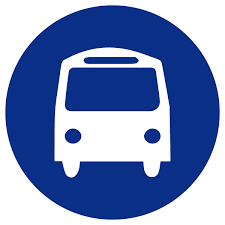 Transit
Transit
Wichita has a limited mass-transit system, but is making strides towards significant improvements.
NOTE:
The TRANSIT section
has outgrown
the PASSENGER page
of the TRANSPORTATION pages
...and is now on its
own page.
To view the new
TRANSIT page,
CLICK HERE.
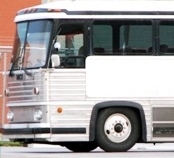 Inter-City Bus (Greyhound)
Inter-City Bus (Greyhound)
Wichita is served by Greyhound Bus Lines, the nation's main inter-city (city-to-city) passenger bus service. Greyhound is a commercial entity, loosely regulated by the federal Interstate Commerce Commission (ICC) and the U.S. Dept. of Transportation.
Greyhound has various routes, through Wichita, connecting the city to Topeka, Kansas City, Oklahoma City and Denver. [2021 NOTE: Deterioriating bus service, nationwide, is making these connections less frequent or reliable, and some may be discontinued.]
A couple of "slow boat" routes wander through the Kansas countryside connecting many small towns with Wichita.
Service is generally once daily on any route, and connections must sometimes be made in the wee hours of the night.
Until the 1990s, inter-city bus service across the United States was mostly split between Greyhound (who mainly served the Eastern and Northern U.S.) and tne National Trailways consortium (who served the Southern and Western U.S.); Wichita was on the Trailways routes, normally served by the Continental Trailways franchisee. In the late 1980s to early 2010s, a series of mergers and takeovers gave Greyhound most of the Trailways routes, including Wichita.
Riding the inter-cty bus
Bus accommodations are crude: A simple chemical toilet at the back of the bus, overhead individual lighting and ventilation nozzles, and slightly reclining seats, crammed close together. The buses do not realistically accommodate people with significant mobility handicaps or severe obesity. No bottled or running water is available (though customers may bring their own drinks and snacks -- some of which can usually be acquired from vending machines at the terminal).
Inter-cty bus terminal
In the late 2010s, Greyhound moved from their decades-old Wichita bus station -- on Broadway, in south Downtown -- to sharing the Wichita Transit Center (see above) with the local transit bus sevice (though using a separate ticket window).
In 2016, the city announced plans to turn over the city's transit terminal to Greyhound as a new terminal for Greyhound's inter-city buses.
At present (summer 2018), the two bus operations -- local Wichtia Transit and inter-city Greyhound -- share the Wichita Transit Center. Each has their own ticket window, in separate parts of the building. For more details, contact the respective agency (but expect long wait times for an answer, if any is offered).
This website was developed while Greyhound was still operating from the original bus station, on south Broadway. So the following section, about the original bus station, remains here as an historical reference:
The original Greyhound / Continental Trailways terminal
 The original, old Greyhound / Continental Trailways terminal was in south-central downtown, on Broadway, between Douglas and Kellogg. Wichita's local Transit buses did not normally stop there, forcing patrons to use taxis to get to and from their Wichita origins and destinations -- or grab their luggage and hike a few blocks from (or to) the downtown Transit Center. Taxis were frequently found waiting in front of the Greyhound terminal for the chance to serve arriving bus passengers.
The original, old Greyhound / Continental Trailways terminal was in south-central downtown, on Broadway, between Douglas and Kellogg. Wichita's local Transit buses did not normally stop there, forcing patrons to use taxis to get to and from their Wichita origins and destinations -- or grab their luggage and hike a few blocks from (or to) the downtown Transit Center. Taxis were frequently found waiting in front of the Greyhound terminal for the chance to serve arriving bus passengers.
Very limited, short-term parking was available on the north side of the buildling for bus freight customers and for pick-up/unloading of bus passengers.
The original Greyhound terminal provided limited accommodations (seats, bathrooms, vending machines, and a service counter for purchasing tickets and checking or retrieving luggage). Bathrooms had to be reached by climbing an absurdly long, high staircase. A small diner, adjacent to the lobby, was generally out-of-business for several years, though a string of fast-food restaurants line the next block south.
Passenger Rail Service (Amtrak)
(in nearby Newton)
Amtrak, the federally subsidized passenger rail line (which provides the nation's only substantial passenger rail service), passes through nearby Newton, 30 miles to the north, stopping at the small Newton railroad terminal in the wee hours of the morning, enroute to destinations...
• East (Kansas City, St. Louis, Chicago, and the East Coast) and
• West (Albequerque, Los Angeles and the West Coast).
Although Amtrak's "Heartland Flyer" route extends north from San Antonio, Texas, through Fort Worth, to Oklahoma City, it stops there — and does not reach Wichita, nor connect to the east-west Amtrak route through Newton. Instead, Amtrak uses bus service between Oklahoma City and Newton to transport its passengers between those terminals, through Wichita.
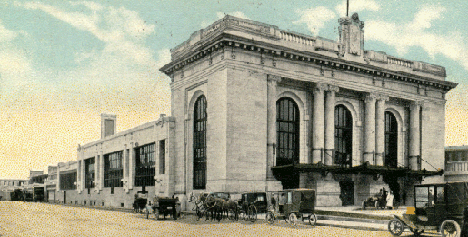 In the heyday of passenger rail service, before widespread ownership of automobiles, Wichita operated a grand rail terminal across the tracks east of Downtown, at Union Station. However, passenger rail service to Wichita ended decades ago, as with many cities throughout the U.S.
In the heyday of passenger rail service, before widespread ownership of automobiles, Wichita operated a grand rail terminal across the tracks east of Downtown, at Union Station. However, passenger rail service to Wichita ended decades ago, as with many cities throughout the U.S.

Though the Union Station terminal still stands alongside active railroad tracks (now used by freight trains), it is vacant, and being redeveloped as a shopping and office center -- not a rail terminal.
Though city, state and federal government elected officials and leaders continue to debate the merits of extending Amtrak's passenger rail lines from Oklahoma City through Wichita to Newton, no real progress has been made on that issue, and Wichita continues to be one of the largest U.S. cities without inter-city passenger rail service -- one of only 3 among the nation's 50 largest communities, according to a 2017 statement by Wichita Mayor Jeff Longwell.
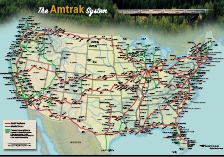
As with local and inter-city bus service, most Wichitans dismiss passenger trains as "for the poor," and therefore find it unattractive and unimportant, even repugnant to some. So broad, strong community support for passenger rail service has not emerged.
And the fuel-efficiency of passenger trains is a threat (however slight) to Wichita's oil-industry leaders.
Community leaders and officials, state legislators and the Governor, and the state's members of Congress, have all offered little support for the idea.
In the wake of this less-than-enthusiastic local and state response to advocates of rail service, a recent decision by Amtrak -- not to extend their Texas line north to Wichita -- disappointed the few, but passionate, passenger rail advocates in Wichita.
Some advocates and consultants, however, continue to push for passenger rail service directly to the city -- though no one expects it to happen within the next several years. A visit by an AmTrak train on an inspection tour, June 9, 2017, sparked new hopes among local rail enthusiasts, including the Mayor. However, city leaders indicated this was just another step in a 16-year-long process to bring
passenger rail service to Wichita.
The 2021 Amtrak maps below show
- current routes in
dark blue,
- possible new routes in
light blue,
and
- possible route enhancements in
orange.
Click on either map to enlarge in a separate tab/window.
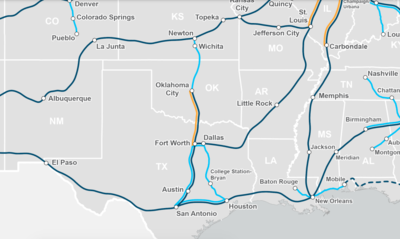

UPDATE 2021:
New U.S. President Joe Biden is pushing a massive, national infrastructure-expansion program -- and advocates of rail service extension to Wichita believe this may be a turning point for rail service to Wichita.
The particular expectation is that, if approved and Congress funds it, Amtrak will extend the north-south "Heartland Flyer" route (which now connects Amtrak's southernmost east-west route (New Orleans to Los Angeles, through San Antonio) to cities north of San Antonio: Austin, Dallas/FortWorth and Oklahoma City). The hoped-for extension, to Wichita, and on to Newton, would connect with the east-west "Southwest Chief" route that stretches from Chicago to Los Angeles. The new route would dramtically expand rail travel opportunities and convenience for Wichita passengers.
See:
Meanwhile, though, the Newton Amtrak passenger terminal remains available for trips east and west, for those with personal automobiles, willing to get up in the middle of the night and drive there, and abandon their cars at the station for their rail journey -- or be driven there (and picked up later) by compassionate friends or family. Or you can take a bus passing back and forth between the Amtrak terminals in Newton and Oklahoma City, through Wichita.
 Charter Services
Charter Services
(Limousine & Bus - Local & Inter-City)
Wichita is served by several local and inter-city bus and limousine charter services.
Local chauffered-limousine services are numerous, though usually with only a few cars each.
Local-activity bus charters are possible through Wichita Transit (see Transit, above), and through various local bus operators -- including school bus services and party-bus services.
Long-haul charter-bus service is available from operators in Wichita and Winfield (40 miles to the south-southeast), including both school buses and large, comfortable inter-city buses (with air-conditioning and onboard bathroom).
 Emergency & Handicapped Transport Services
Emergency & Handicapped Transport Services
(Ambulance, Air Ambulance, Wheelchair Van, Paratransit Van)
Wichita is served by several local and inter-city Ambulance, Air Ambulance, Wheelchair Van, and Paratransit Van services.
- Emergency Ambulance:
In Wichita, as throughout Sedgwick County, emergency ambulance service is provided by the Sedgwick County EMS (Emergency Medical Services), dispatched by the county's 9-1-1 Emergency Dispatch Center. The large, modern, box-van ambulances are staffed with certified Emergency Medical Intensive Care Technicians (EMICT), trained to provide on-the-scene emergency medical treatment to stabilze a patient before transport to the appropriate hospital.
- Non-Emergency Ambulance:
Wichita has commercial non-emergency ambulance service, which provides local and city-to-city transport. For transport within Sedgwick County, only the Sedgwick County EMS can provide non-emergency ambulance service, but other service is available for transport into or out of the county. Also, various companies and individual entrepreneurs offer small vehicles (commonly mini-vans) for transport of bed-ridden patients and the mobility-handicapped). Accommodations vary. Costs can be quite high, and insurance may not always cover it. Sometimes cash payment is required in advance.
- Air Ambulance:
Wichita is a base for commercial air-ambulance services (LifeWatch and EagleMed) providing emergency and non-emergency transport of patients by helicopter or airplane. Medical personnel and equipment are onboard during emergency flights, and -- by arrangement, at least -- non-emergency flights.
The helicopters vary, but are chiefly the reputable, single-engine 120-mph Eurocopter A-Star or Bell JetRanger or LongRanger.
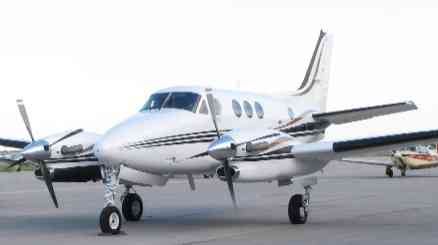
The airplane normally used is the world-renowned Wichita-built Beech King Air, a 250-300 mph, high-flying, pressurized-cabin turboprop, equipped for flying over a thousand miles in nearly all weather, including heavy rain or snow, or in icing -- and capable of operating to-and-from nearly all airports, small or large.
- Wheelchair Van:
Various companies and individual entrepreneurs offer vehnicles for transporting mobility-handicapped people, and their wheelchairs. Some can accommodate motorized wheelchairs, but some cannot. Most can accommodate oxygen tanks and breathing apparaatus. With cost and/or response-time often being prohibitive, many wheelchair-dependent people prefer to ride in a local taxi (see above) or by Wichita Transit "paratransit" vans (see below), when practical. Accomodations, costs and necessary arrangements vary widely.
- Paratransit Van:
Wichita Transit operates a small fleet of "paratransit vans": small buses with wheelchair lifts, and designed to easily accommodate both ambulatory people in regular seats and multiple wheelchair-bound occupants in their (well-secured) wheelchairs. Pickup must be by prior arrangement, typically a day in advance. The van may carry multiple un-related passengers, and make multiple individual stops on a run.
Additional paratransit van service is available through other providers, locally, in some cases.
KETCH (Kansas Employment & Training Center for the Handicapped), operates a large fleet of paratransit vans, primarily for its own clientele. So do some nursing homes and senior-living centers.
 Elevator
Elevator
Though seldom thought of as a passenger vehicle, the humble elevator is actually one of the most powerful forms of transportation -- when employed in a suitable building.
An elevator can move people vertically, rather than horizontally, rising above traffic, and elevating passengers to a wide range of alternate levels -- in essence, alternate worlds -- without the hassles of an automobile or other motor vehicle. And stacking stories reduces thermal "roof losses" of energy, by limiting the exposed roof area to only one roof for several floors.
Elevators are a key part of the transportation system of large cities -- actually making large, high-density cities possible. For instance, the elevators in a cluster of 10-story buildings, spread out over a single city block, can eliminate the need for single-story buildings covering 10 blocks. This reduces sprawl, and reduces the vehicle transportation and roadway requirements, and other infrastructure requirements that go with sprawl, and reduces congestion on the road.
 Downtown Wichita relies especially heavily on elevator transportation. Over two-dozen buildings downtown are more than 4 stories high, and essentially require elevators for transport of people and freight. With the emphasis on downtown redevelopment, elevators have suddenly grown in importance to Wichita's transportation future.
Downtown Wichita relies especially heavily on elevator transportation. Over two-dozen buildings downtown are more than 4 stories high, and essentially require elevators for transport of people and freight. With the emphasis on downtown redevelopment, elevators have suddenly grown in importance to Wichita's transportation future.
Several other high-rise buildings dot the Wichita landscape, and depend upon elevators.
The elevator is, arguably, the original "electric car" -- and relying on it for transport, rather than automobiles, reduces direct carbon emissions. And, if the electricity comes from a non-polluting source, pollution is reduced dramatically.
Further, because it travels shorter distances than an automobile to provide passengers with the same degree of access to new places, less energy is required. The profusion of elevators in major cities is a major key to their energy efficiency. New York City, famed for its 100-story skyscrapers (accessed by elevator), is also often cited by energy experts as the most energy-efficient city in the United States.
In Wichita, as in most municipalities, city government and elevator vendors provide a system of inspection that keeps Wichita elevators safe. The major national elevator vendors, Otis Elevator and Montgomery Elevator, have Wichita operations offices, providing service and support.
![]() Communications
Communications
(as Virtual Transportation)
Another medium of transportation is the transport of thoughts and information through communications. While this may seem a rather wild stretch of the imagination, it is, in fact, one of the principal substitutes for other forms of transportation.
Originally, before communications, people had to meet face-to-face to share thoughts and information. Over 10,000 years ago, however, prehistoric Man began the art of writing -- and thus could record a thought or bit of information onto stone or clay tablets, and leave (or send) them for others to read. However, this method still required humans to travel to the writing -- or the writing to be taken to them, by a person in motion.
Primitive non-transport communications evolved -- particularly signaling people at a distance by hand signals, flags, smoke, fire beacons or reflected sunlight. But these provided very limited and cumbersome communications, and were subject to various environmental limitations.
Starting with the development of the telegraph, in the 1800s, it became possible to send thoughts and information vast distances without anyone traversing the distance (except those who first erected the telegraph lines). With the invention of the telephone, telegraph lines could carry entire voice conversations -- radically expanding the range of thoughts and information that could be shared efficiently and promptly, over seemingly infinite distances.
While radio (particularly two-way radio) and television carried this capability even further, a more material method evolved: The "facsimilie" -- "fax" -- machine, which could transmit images from paper in one place to paper in another. It no longer became necessary for people to meet (nor mail service to hand-deliver) documents, illustrations, contracts and the like. For business and government, this became a revolution in communications that significantly reduced the need for mail and courier service.
But the biggest supplanting of transportation came with the development of computer-based communications -- particularly the Internet. "E-mail" ("electronic mail") in particular, provided efficient new ways for individuals and businesses to communicate instantly -- even share documents and images at a distance -- without the need for physical transportation.
The establishment of the Internet, and its "user-friendly" subdivision, the World Wide Web, opened many other uses of electonic communications -- allowing the online posting of advertising and technical literature, even entire libraries of information -- and even voice (including real-time video conferencing, such as via "Skype").
The explosive growth of e-mail and the Internet devastated the U.S. Postal Service, radically reducing the volume of business mail it carried, and sharply undermining its revenues.
But the various effects also had an impact on other areas of transportation, including courier services, small business aircraft, airlines, and even retail and wholesale stores (as people began shiting towards "online" shopping from far-distant vendors, via the Internet).
With the growth of e-mail and "social networking" (Facebook, Twitter, etc.), many people have begun interacting with others more by electronic communications than by traveling to see people in person.
All these factors (except for online shopping, which requires delivery of goods) have, generally, over time, undermined the demand for physical transportation, and its related infrastructure.
Yet, paradoxically, expanding communications can have an impact on accelerating economic activity -- in turn creating an increased demand for goods and services, which, in turn, increases the demand for transportation (something already happening as a result of population growth and migration).
COMMUNICATIONS can either
reduce
or
increase
the demand for TRANSPORTATION -- depending upon a host of variables,
including new technological developments, transient events and trends, economic cycles, and variations in the environment (physical, technological, business, regulatory, and social) for both mediums of movement.
Participate - Let your voice be heard!